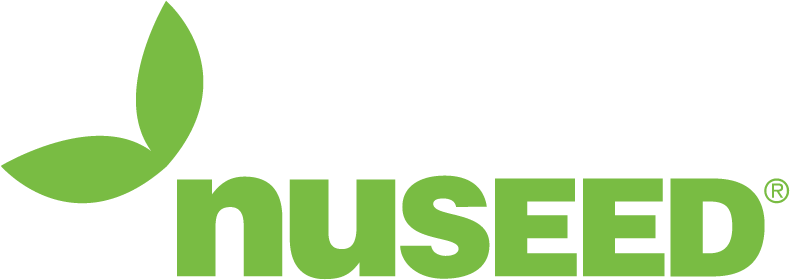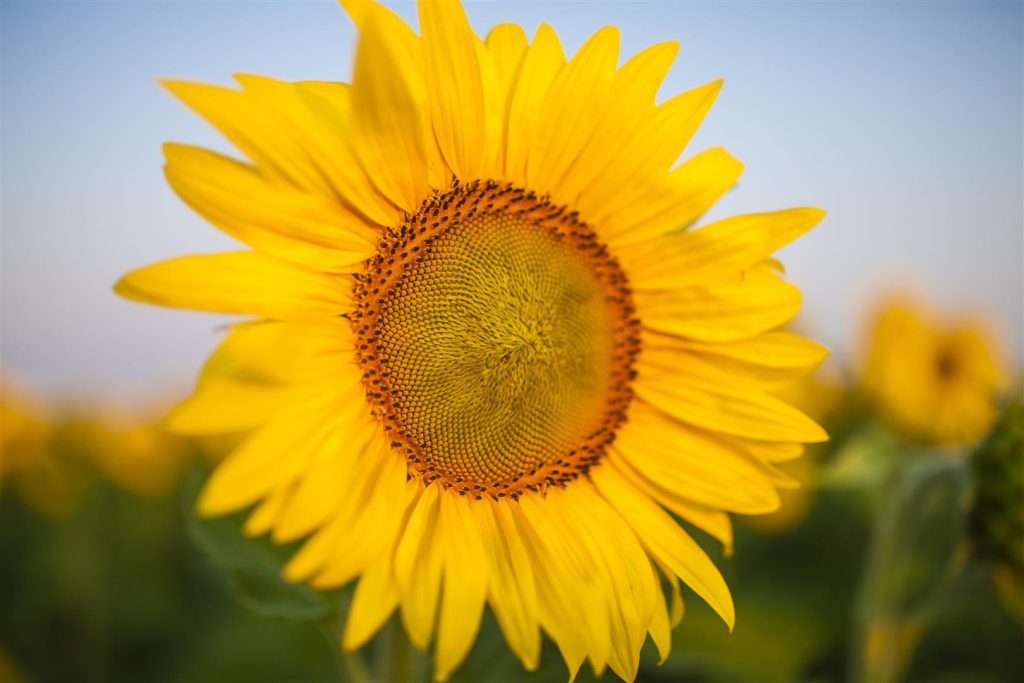Clearfield is a non-genetically modified (Non-GM) trait for herbicide tolerance and it is incorporated in a number of different crop species, including canola, sunflowers, and rice. The technology was developed by BASF and is made available to plant breeding partners, including Nuseed.
The Clearfield production system combines high yield potential hybrid varieties with high quality post-emergence herbicides. Because it uses traditional plant breeding techniques, it is an important tool in EU countries.
“Clearfield has been particularly valuable in field conditions where weed burdens cannot be well controlled by other means,” explains Dave Marris from BASF. “For example, brassicaceae weeds in canola, red rice (Oryza sativa) in commercial rice crops and orobanche (broomrape) in sunflowers.”
Sunflower
Early in its establishment, sunflower competes very poorly against weeds for light, nutrients and water, until canopy closure, therefore heavy weed burdens can have a big impact on yield.
“When grown conventionally, pre-emergence herbicides are important, but they require rainfall to become activated,” explains Mike Lee, an agronomist with 10 years of experience in Ukraine.
“However, there is often insufficient soil moisture to really activate pre-emergent residual herbicides which can result in poor levels of weed control.”
Another important problem in Sunflower crop is Orobanche. Orobanche is a parasitic plant that infects sunflowers by feeding off the roots of the host plant.
It is a pale plant that doesn’t contain any chlorophyll. It produces flower stems without leaves and grows to between 40-60cm high.
A single plant carries 10-100 flowers and may produce in excess of >100,000 seeds which are small and can be spread easily by flowing water and wind and can also remain viable for >10 years.
The weed is a spreading problem and can now be found from south and east Europe, into southern central Asia and into China. From Russia, it has moved steadily westwards into most major sunflower growing countries.
Orobanche can cause yield losses of between 50-80% depending on the infestation levels and environmental conditions.
Clearfield and Clearfield Plus systems are excellent tools to manage both: weeds, including those that are tough to control, and Orobanche.
One part of Clearfield and Clearfield Plus system is seeds, the other one is a herbicide. Clearfield herbicides (Eurolightning, Pulsar, Beyond) and Clearfield Plus herbicides (Euro-Lightning Plus and Pulsar Plus), are from the imidazolinone group, and, whilst conventional sunflower hybrids are susceptible to the chemistry, resistant hybrids can survive otherwise lethal applications of the herbicides.
“Eurolightning Plus and Pulsar Plus can be applied to Clearfield Plus sunflowers, post-emergence, from 2-8 leaves of sunflower hybrids,” Mr Lee adds. “Eurolightning Plus and Pulsar Plus are broad-spectrum broadleaf and grass herbicides that have no tank-mix antagonism and they are very simple to use.” Manager and Senior Broker at Agricore, Petar Dimitrov, who trades in oilseeds in Bulgaria said “There are still [sunflower] fields in the south of the country that have an Orobanche problem, but mainly because they use seeds that are not Orobanche tolerant and because of lack of proper crop rotation. In the north the problem is more or less solved, it’s a matter of choosing the right seeds and technology like Clearfield.”
International agricultural consultant, Lawrence Richmond, who manages farms in Ukraine and Romania, uses Clearfield sunflower hybrids to control Orobanche saying “If we use standard sunflowers hybrids then we have problems with Orobanche, it is a big yield robber, but we use Clearfield sunflower and have no issue.”
Nuseed Clearfield Hybrids
Most Nuseed hybrids include the Clearfield trait for advanced and effective weed control, particularly of Orobanche (broomrape). See catalogue for more the full range [link to catalogue]
“Herbicide tolerance in sunflower will continue to be an important trait in Eastern Europe.,” explains Nuseed’s European General Manager, Patrick Dieterich.
“The intensive sunflower cultivation in this area requires state of the art hybrids with genetic resistance to disease as well as an herbicide tolerance trait. Furthermore, Clearfield is an important tool in a farmer’s arsenal to combat the effects of Orobanche in the field, as well as the spread of the Orobanche weed, geographically.”
“Clearfield is based on the ImiSun trait which has emerged as an essential component of hybrid sunflower oil and confectionery production,” Mr Dietrich says. “Since its launch in 2003 it has been adopted in sunflower growing regions around the world due to a wider spectrum of weed control; a higher level of consistency; greater flexibility in the timing of herbicide applications; season-long weed control, and a low rate of application.”
The Clearfield Plus Production System for sunflowers delivers season-long weed control and greater crop tolerance in stressful environmental situations, whilst contributing to increased oil content and grain yield.
Using the Clearfield System
How to get the best from the Clearfield System:
Easy-to-use system
Clearfield hybrids get off to a good start after planting.
Many farmers start using Clearfield for problem weed control but then expand the area due to wider benefits and ease of use. In a 2017 survey of 297 Clearfield oilseed rape growers in the UK, 30% said that Clearfield hybrids were easier to grow than non-Clearfield ones. The timing flexibility (1 to 4 leaves of the weed) means growers can fit applications around other farm work and miss out preemergence herbicides where not required. Clearfield herbicides are applied post-emergence and are suitable for any establishment system.
Use rates
The guidance for use:
- Clearfield® Sunflower – Pulsar / Eurolightning 1,0-1,25 /ha
- Clearfield® Plus Sunflower – Pulsar Plus 1,2-2,0 l/ha. Euro-Lightning Plus 1,6-2,5 l/ha
*Rotational crop restrictions are determined based on geographic region, annual rainfall, soil pH and tillage practices. See Pulsar, Eurolightning, Eurologhtning Plus or Pulsar Plus herbicide product label to find rotational crop restrictions for a specific region and cropping system.
Timing – don’t be too late
Clearfield herbicides are all post-emergence. Imazamox works on young plant tissue; young shoots, leaves and roots. It works by stopping amino acid production, so growth stops and the weed dies. Actively growing small weeds are best targeted as they have less resource to allow recovery. The optimal weed size is between 1 and 4 true leaves for all species. Large weeds take longer to die and have more capacity to regrow.
Apply at 4 to 8-leaf Clearfield and 2-8 leaf Clearfield Plus Sunflower
Adjuvants:
All Clearfield and Clearfield sunflower herbicides are ready to use and don’t require external adjuvant.
Applications
A medium spray is fine using flat fan or small droplet air induction nozzles. Avoid coarse or large droplet air induction nozzles. Angled nozzles help in a thick crop. The imazamox in Clearfield herbicides is mainly foliar acting, with some residual activity and it needs to cover target weeds and be allowed to dry. Allow a minimum of two hours for the spray to become rainfast when applied to a dry leaf.
Record-keeping
Keep good field records. Treatment of a non-Clearfield crop with a Clearfield herbicide will result in complete crop loss, so careful management and record keeping is vital. Keeping good field records is essential to track and control CL volunteers within the rotation.


